You are using an out of date browser. It may not display this or other websites correctly.
You should upgrade or use an alternative browser.
You should upgrade or use an alternative browser.
Chinese Military,Political and Social Superthread
- Thread starter nULL
- Start date
E.R. Campbell,
That may be the Chinese goal, but I doubt they will be able to accomplish it without fighting for it.
The UN ruling makes it extremely difficult for the Chinese to back up their actions/claims with any sort of credibility, since the world body has already told them they are in the wrong.
And while the Chinese infringe upon the sovereignty of their neighbours, forcefully take their resources, and bully their maritime assets (both civil and military) - the US is doing the exact opposite.
The US is insisting upon the recognition of borders, freedom of the sea, sovereign use of maritime resources by smaller nations, etc.
At the end of the day, I think the US has done a great job of building relations with China's neighbours, providing them with assets, reassurance patrols, etc. I don't think China can infinitely expand its type of influence without 'somebody' standing their ground - and therefore starting a conflict.
That may be the Chinese goal, but I doubt they will be able to accomplish it without fighting for it.
The UN ruling makes it extremely difficult for the Chinese to back up their actions/claims with any sort of credibility, since the world body has already told them they are in the wrong.
And while the Chinese infringe upon the sovereignty of their neighbours, forcefully take their resources, and bully their maritime assets (both civil and military) - the US is doing the exact opposite.
The US is insisting upon the recognition of borders, freedom of the sea, sovereign use of maritime resources by smaller nations, etc.
At the end of the day, I think the US has done a great job of building relations with China's neighbours, providing them with assets, reassurance patrols, etc. I don't think China can infinitely expand its type of influence without 'somebody' standing their ground - and therefore starting a conflict.
- Reaction score
- 6,316
- Points
- 1,260
Although there are no political parties, per se, in China, there are factions within the CCP that are, probably, more extreme that our Conservative vs NDP or the US Democrats vs Republicans. One such faction, which is opposed to much of what the current Paramount Leader Xi Jinping is doing, is in the military. The PLA has a strong political voice and it is not shy about using it. Threats of war and military action are pretty common from the military faction, and retaliation ~ arrests and disappearances ~ are equally common from the Xi faction. Civilian control of the military is not as firmly rooted in China as it is in the West but Xi is doing real, serious harm to the military faction's political power as he tries to bring it to heel.
- Reaction score
- 0
- Points
- 360
China using gas platforms near Japan for military purposes?
East China Sea: Japan Spots Chinese Radar on Gas Exploration Platform
Does the radar suggest the creeping militarization of gas platforms in the East China Sea?
By Ankit Panda
August 09, 2016
Adding to tensions in the East China Sea, a Japanese foreign ministry spokesman noted on Sunday that authorities in Tokyo discovered that China had installed radar equipment on a gas platform this summer, in late June, near disputed waters.
The Japanese discovery of a radar on board a gas platform has stoked fears that China may be converting its gas exploration platforms for partial military use. The approach would echo China’s artificial islands in the Spratly Islands in South China Sea, which Beijing claims are for non-military use.
in a slideshow (PDF) released on August 6 by the Japanese foreign ministry, showing Chinese gas exploration platforms in the East China Sea.
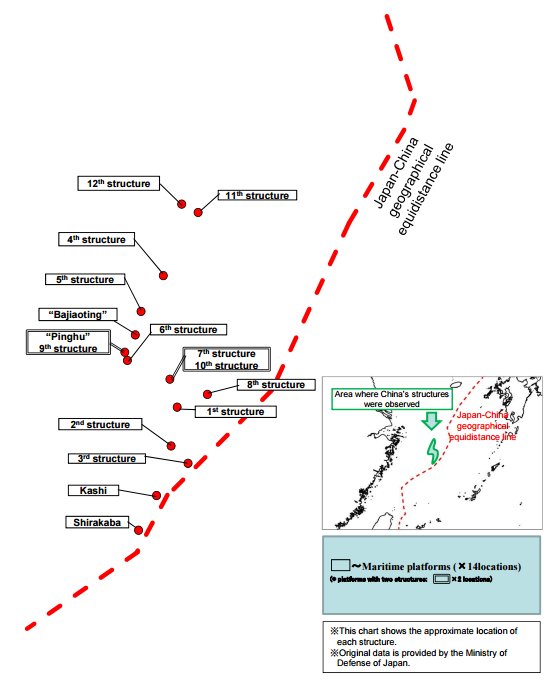 Map taken from Akit Panda's Twitter account]
Map taken from Akit Panda's Twitter account]
The Diplomat
- Reaction score
- 36
- Points
- 560
Forget Africa, here is where the real centre of gravity is:
http://www.reuters.com/article/us-southchinasea-vietnam-idUSKCN10K2NE
http://www.reuters.com/article/us-southchinasea-vietnam-idUSKCN10K2NE
Exclusive: Vietnam moves new rocket launchers into disputed South China Sea - sources
HONG KONG | BY GREG TORODE
Chinese dredging vessels are purportedly seen in the waters around Mischief Reef in the disputed Spratly Islands in the South China Sea in this still image from video taken by a P-8A Poseidon surveillance aircraft provided by the United States Navy May 21, 2015. U.S....
Vietnam has discreetly fortified several of its islands in the disputed South China Sea with new mobile rocket launchers capable of striking China's runways and military installations across the vital trade route, according to Western officials.
Diplomats and military officers told Reuters that intelligence shows Hanoi has shipped the launchers from the Vietnamese mainland into position on five bases in the Spratly islands in recent months, a move likely to raise tensions with Beijing.
The launchers have been hidden from aerial surveillance and they have yet to be armed, but could be made operational with rocket artillery rounds within two or three days, according to the three sources.
Vietnam's Foreign Ministry said the information was "inaccurate", without elaborating.
Deputy Defence Minister, Senior Lieutenant-General Nguyen Chi Vinh, told Reuters in Singapore in June that Hanoi had no such launchers or weapons ready in the Spratlys but reserved the right to take any such measures.
"It is within our legitimate right to self-defense to move any of our weapons to any area at any time within our sovereign territory," he said.
The move is designed to counter China's build-up on its seven reclaimed islands in the Spratlys archipelago. Vietnam's military strategists fear the building runways, radars and other military installations on those holdings have left Vietnam's southern and island defenses increasingly vulnerable.
Military analysts say it is the most significant defensive move Vietnam has made on its holdings in the South China Sea in decades.
Hanoi wanted to have the launchers in place as it expected tensions to rise in the wake of the landmark international court ruling against China in an arbitration case brought by the Philippines, foreign envoys said.
The ruling last month, stridently rejected by Beijing, found no legal basis to China's sweeping historic claims to much of the South China Sea.
Vietnam, China and Taiwan claim all of the Spratlys while the Philippines, Malaysia and Brunei claim some of the area.
"China's military maintains close surveillance of the situation in the sea and air space around the Spratly islands," China's defense ministry said in a faxed statement to Reuters.
"We hope the relevant country can join with China in jointly safeguarding peace and stability in the South China Sea region."
The United States is also monitoring developments closely.
"We continue to call on all South China Sea claimants to avoid actions that raise tensions, take practical steps to build confidence, and intensify efforts to find peaceful, diplomatic solutions to disputes," a State Department official said.
STATE-OF-THE-ART SYSTEM
Foreign officials and military analysts believe the launchers form part of Vietnam's state-of-art EXTRA rocket artillery system recently acquired from Israel.
EXTRA rounds are highly accurate up to a range of 150 km (93 miles), with different 150 kg (330 lb) warheads that can carry high explosives or bomblets to attack multiple targets simultaneously. Operated with targeting drones, they could strike both ships and land targets.
That puts China's 3,000-metre runways and installations on Subi, Fiery Cross and Mischief Reef within range of many of Vietnam's tightly clustered holdings on 21 islands and reefs.
While Vietnam has larger and longer range Russian coastal defense missiles, the EXTRA is considered highly mobile and effective against amphibious landings. It uses compact radars, so does not require a large operational footprint - also suitable for deployment on islets and reefs.
"When Vietnam acquired the EXTRA system, it was always thought that it would be deployed on the Spratlys...it is the perfect weapon for that," said Siemon Wezeman, a senior arms researcher at the Stockholm International Peace Research Institute (SIPRI).
There is no sign the launchers have been recently test fired or moved.
China took its first Spratlys possessions after a sea battle against Vietnam's then weak navy in 1988. After the battle, Vietnam said 64 soldiers with little protection were killed as they tried to protect a flag on South Johnson reef - an incident still acutely felt in Hanoi.
In recent years, Vietnam has significantly improved its naval capabilities as part of a broader military modernization, including buying six advanced Kilo submarines from Russia.
Carl Thayer, an expert on Vietnam's military at the Australian Defence Force Academy, said the deployment showed the seriousness of Vietnam's determination to militarily deter China as far as possible.
"China's runways and military installations in the Spratlys are a direct challenge to Vietnam, particularly in their southern waters and skies, and they are showing they are prepared to respond to that threat," he said. "China is unlikely to see this as purely defensive, and it could mark a new stage of militarization of the Spratlys."
Trevor Hollingsbee, a former naval intelligence analyst with the British defense ministry, said he believed the deployment also had a political factor, partly undermining the fear created by the prospect of large Chinese bases deep in maritime Southeast Asia.
"It introduces a potential vulnerability where they was none before - it is a sudden new complication in an arena that China was dominating," he said.
- Reaction score
- 0
- Points
- 360
Last week, the Philippines sent a special envoy to China, Fidel Ramos, a former president of the Philippines during the 1990s. Ramos is not only a former military general and a foreign graduate of West Point, but he also fought in the Korean War as a junior officer with the Philippine contingent (PEFTOK) sent as part of UN forces in Korea. So he fought against Chinese troops at one point in his youth.
It seems the use of Ramos as a special envoy through a back channel has worked, since tensions seem to have finally began to relax.
Wall Street Journal
Interaksyon (news site for Channel 5 in the Philippines)
It seems the use of Ramos as a special envoy through a back channel has worked, since tensions seem to have finally began to relax.
Wall Street Journal
Beijing Flies Bombers Over Disputed South China Sea
Development comes as former Philippine leader heads to China for talks on resolving maritime dispute
By CRIS LARANO
Updated Aug. 7, 2016 12:13 p.m. ET
Beijing said over the weekend that it flew bombers, fighter jets and other military aircraft over contested areas of the South China Sea recently, an announcement that came as former Philippine President Fidel Ramos prepared to head to China for preliminary talks aimed at settling the territorial dispute.
The office of Mr. Ramos, who was appointed last month by President Rodrigo Duterte as special envoy to resolve the dispute following an international tribunal’s ruling against China’s claims, confirmed that he would travel to Beijing on Monday.
< Edited >
Mr. Ramos, 88 years old, is a respected elder statesman in Asia and has maintained good personal ties with China since ending his single, six-year term as president in 1998. A person close to Mr. Ramos said that he has been busy preparing for the talks with a small delegation that will travel with him, including his Mandarin-speaking grandson.
< Edited >
Interaksyon (news site for Channel 5 in the Philippines)
Ramos meets senior Chinese official to mend ties
By: Agence France-Presse
August 12, 2016 1:27 PM
HONG KONG, China -- Former President Fidel Ramos said Friday he had met with a senior Chinese official during a trip to Hong Kong aimed at improving ties between Manila and Beijing, with both sides working towards formal discussions.
Relations have cooled since a UN-backed tribunal ruled last month that China's claims over most of the South China Sea were invalid, in a sweeping victory for the Philippines which brought the case.
Ramos -- a longtime advocate of closer Philippine-Chinese ties -- was sent as a conciliatory envoy by President Rodrigo Duterte.
In a two-day meeting in Hong Kong, Ramos said he had discussions with Madam Fu Ying, chair of the foreign affairs committee of the National People's Congress -- China's communist-controlled legislature. Fu Ying is a former ambassador to Manila.
(...SNIPPED)
- Reaction score
- 0
- Points
- 360
Major update: Perhaps this 2nd carrier will actually be used by China to show the flag compared to her predecessor which was only used for training?
China's first indigenous aircraft carrier nearing completion
IHS Jane's 360 - 17 August 2016

Airbus Defence and Space imagery showing the Type 001A hull in dry dock at Dalian. The hull is largely complete, with just one aircraft elevator, superstructure, and some deck sections left to be added. Source: CNES 2016, Distribution Airbus DS/© 2016 IHS
China's first indigenous aircraft carrier nearing completion
IHS Jane's 360 - 17 August 2016
The imagery shows that, with the addition of the bow section and other exterior components, the assembly of the Type 001A CV is nearly complete. Two of the component fabrication areas adjacent to the dry dock are largely clear of materials, indicating that work on the Type 001A hull is nearing an end. Few uninstalled components remain present, including the forward aircraft elevator.
<snipped>
Across the harbour from the Type 001A's dry dock, work on Dalian's three Type 052D DDG hulls is progressing. One hull remains in dry dock, with two pier side. The first hull is visibly complete and is undergoing sea trials, while the second hull, launched on 3 August 2016, awaits the installation of various components.
Berthed at the northern end of the ship yard, the second hull lacks many sensor and weapon fittings. Notably absent are the forward 130 mm gun, the forward vertical launch system, and various sensor fittings, including the Type 366 radar mounted atop the bridge.

Airbus Defence and Space imagery showing the Type 001A hull in dry dock at Dalian. The hull is largely complete, with just one aircraft elevator, superstructure, and some deck sections left to be added. Source: CNES 2016, Distribution Airbus DS/© 2016 IHS
- Reaction score
- 66
- Points
- 530
The PRC 052D destroyer is felt to be better than the Japanese Atago.I wouldnt be so quick to write off the Atago.
http://www.nextbigfuture.com/2016/08/china-launches-more-52d-carrier-killer.html

August 16, 2016
China Launches More 52D ‘Carrier Killer’ Destroyers but next type 55 will match US destroyers
The Dalian Shipbuilding Industry Company, traditionally China’s largest shipbuilder, has launched its second Type 052D Luyang III-class destroyer—dubbed “Chinese Aegis”—on August 3 in Dalian in Northeast China, IHS Jane’s Defense Weekly reports. It is only the second vessel of its type built at the Dalian New Shipyard. The first Type 052D Luyang III-class destroyer is currently being fitted, with a third ship to be launched in the immediate future.
Other vessels of the class have been built by the Jiangnan Shipyard, located on Changxing Island in Shanghai. The shipyard has built eight Type 052D Luyang III-class destroyers so far and launched its ninth vessel this July. At least four more are planned, indicating that the number will go beyond the initial number of 12 Luyang III-class vessels before shifting production to the newer Type 055D multi-role cruisers.
The Type 052D destroyer class is part of China's overall anti-access/area denial (A2/AD) strategy and has purportedly been specifically designed to repel attacks by enemy aircraft carrier strike groups, submarines, and anti-ship missiles.
Type 052D Luyang III-class destroyer is equipped with 64 vertical launch cells, each capable of carrying one to four missiles. The ship carries one of the PLAN’s deadliest anti-ship cruise missiles (ASCM), the vertically-launched YJ-18 ASCM. Next to its YJ-18 arsenal, Type 052D guided-missile destroyers are also equipped with modern HQ-9 surface-to-air-missiles.
http://www.nextbigfuture.com/2016/08/china-launches-more-52d-carrier-killer.html

August 16, 2016
China Launches More 52D ‘Carrier Killer’ Destroyers but next type 55 will match US destroyers
The Dalian Shipbuilding Industry Company, traditionally China’s largest shipbuilder, has launched its second Type 052D Luyang III-class destroyer—dubbed “Chinese Aegis”—on August 3 in Dalian in Northeast China, IHS Jane’s Defense Weekly reports. It is only the second vessel of its type built at the Dalian New Shipyard. The first Type 052D Luyang III-class destroyer is currently being fitted, with a third ship to be launched in the immediate future.
Other vessels of the class have been built by the Jiangnan Shipyard, located on Changxing Island in Shanghai. The shipyard has built eight Type 052D Luyang III-class destroyers so far and launched its ninth vessel this July. At least four more are planned, indicating that the number will go beyond the initial number of 12 Luyang III-class vessels before shifting production to the newer Type 055D multi-role cruisers.
The Type 052D destroyer class is part of China's overall anti-access/area denial (A2/AD) strategy and has purportedly been specifically designed to repel attacks by enemy aircraft carrier strike groups, submarines, and anti-ship missiles.
Type 052D Luyang III-class destroyer is equipped with 64 vertical launch cells, each capable of carrying one to four missiles. The ship carries one of the PLAN’s deadliest anti-ship cruise missiles (ASCM), the vertically-launched YJ-18 ASCM. Next to its YJ-18 arsenal, Type 052D guided-missile destroyers are also equipped with modern HQ-9 surface-to-air-missiles.
S.M.A. said:China using gas platforms near Japan for military purposes?
What a waste of money, to think what all that money could do to improve the lives of the average Chinese peasant, clean infrastructure, clean air, clean water. They could bury by simply offering a far better quality of life to their people. What fools!
- Reaction score
- 0
- Points
- 360
Lightguns said:What a waste of money, to think what all that money could do to improve the lives of the average Chinese peasant, clean infrastructure, clean air, clean water.
Well if you go visit the prosperous coastal cities such as Shanghai, Guangzhou and Shenzhen, you'll see that those areas are quite developed and there is an emergent middle class; go to the Xintiandi area of Shanghai and you might even think you were in a first world country complete with Zara luxury shops and Haagen Dazs ice cream shops. And them there's Shanghai Disneyland!
However, some sources I've read suggest that wealth generation has been becoming more unequal in recent years, with the poorer and getting poorer and the "noveau rich" class of China, aka the "tu hao" (土豪)class, becoming richer and richer, but only bringing their money and children overseas in places such as here in Canada. That's why you see 19-year old 2nd generation children of investor immigrants driving Ferraris and Lamborghinis in parts of Vancouver.
If you go further inland to the more rural areas, the poverty is more apparent, and it wouldn't surprise you that millions of these peasants actually go to the more prosperous areas to form part of the huge underground economy. I say "underground economy" because many of these rural residents are prevented by the so-called "hu kou" (户口) or household registration system from settling in these urban areas and are thus prevented from receiving social or health care benefits.
When I worked in the Canadian Consulate in the inland city of Chongqing, China back in 2011-2012, the contrast between rich and poor seemed more apparent to me. In the downtown up-scale area of Jiefangbei with its hotels and high-end malls, you'll see fish mongers and "bang-bang" men (porter helpers) carrying their loads on marble streets alongside Mercedes driven by Chongqing's own noveau rich class. The inland cities are catching up, but at what cost?
- Reaction score
- 0
- Points
- 360
More on the progress of the 2nd Chinese carrier mentioned above:
Popular Mechanics
Popular Mechanics
Here Comes China's First Homebuilt Aircraft Carrier
China's second aircraft carrier probably won't be ready for action until 2020.
By Kyle Mizokami
AUG 18, 2016
China's first home-built aircraft carrier is nearing completion. Satellite photographs indicate most major construction is complete, though much remains to be done and the carrier probably won't be operational until 2020 at the earliest.
The ship is the first of the Type 001A class and has been tentatively nicknamed "CV17" by China-watchers. China's first carrier, Liaoning, is CV16. Liaoning was originally a Soviet aircraft carrier and was bought in the late 1990s as scrap—with the stated intention of being converted into a casino. But she found her way into the hands of the Chinese Navy and spent more than a decade being refitted before being finally commissioned in 2012. China is building CV17 itself. Here's video of Liaoning conducting flight operations in the Yellow Sea:
Like Liaoning, CV17 has a ski ramp to assist aircraft takeoffs. The U.S. Navy uses a more efficient steam-powered catapult system to launch aircraft and is transitioning to electromagnetic propulsion in the new USS Gerald R. Ford-class ships. The presence of a ski ramp on CV17 suggests that China has not fully mastered the catapult system and is sticking to what it knows for now.
(...SNIPPED)
- Reaction score
- 0
- Points
- 360
A controversial figure from the Chinese diaspora in the US dies. Some say Harry Wu was a human rights champion, while others say he was an opportunistic "charlatan".
Asia Times
Asia Times
The contradictions of Harry Wu
By George Koo on August 20, 2016 in AT Top Writers, China, George Koo
Harry Wu, who died at 79 on April 26 while vacationing in Honduras, is to many fellow Americans a human rights activist who survived years in Chinese labor camps to expose the horrors there. Many admire this man who started his life in the U.S. working in a doughnut shop to become a ‘Hoover scholar’ and a popular speaker, win a Nobel Peace prize nomination, make friends among the Congressional community, and attain world celebrity. This writer takes a different view.
When Harry Wu unexpectedly died while on vacation in Honduras, House Minority Leader Nancy Pelosi gave him quite a tribute. She said, “With his passing, the world has lost a global champion for freedom and democracy.” Well ahem, in light of more recent disclosures, may be not.
Recent reports, first in Foreign Policy (May 25) then in New York Times (August 14), described a morally corrupt person, not a knight in shining armor. Wu was accused of having absconded with millions that did not belong to him and was to face charges of sexual misconduct in court. The heading from Foreign Policy said it all: “In death, a darker tale of extortion and sexual misconduct threatens to tarnish his legacy.”
These posthumous disclosures hardly surprised those of us in the Chinese American community that had been following his career. We always knew him to be a charlatan and a scoundrel.
But give Harry Wu credit for being a trailblazer. He discovered that he could make a nice living by saying nasty things about China. Sometimes his statements were believable because they were based on facts skillfully doctored or exaggerated. Other times, he simply made them up as he went; the more lurid he made it, the more compelling he became. The western media could not get enough of his stuff and members of Congress were the most ardent members of his fan club.
(...SNIPPED)
- Reaction score
- 11,860
- Points
- 1,160
Dan Fraser said:What a waste of money, to think what all that money could do to improve the lives of the average Chinese peasant, clean infrastructure, clean air, clean water. They could bury by simply offering a far better quality of life to their people. What fools!
It's cheaper to build a few pretty warships for photo-ops than it is to build sewers and water treatment plants, supply scrubbers for all your power plants and ensure that your road beds are properly compacted before you lay asphalt. Nobody sees any of that stuff.
- Reaction score
- 0
- Points
- 360
More on the Type 055 project vessels, called "cruisers" by some due to their size, while called mere "destroyers" by others:
(pics of construction below article)
Navy Recognition
(pics of construction below article)
Navy Recognition
Pictures Showing China's Type 055 Next Gen Destroyer Under Construction in Shanghai
Recent pictures from China confirm that the first hull of the next generation Type 055 Guided-Missile Destroyer (DDG) for the People's Liberation Army Navy (PLAN or Chinese Navy) entered final assembly stage at the Jiangnan Changxing naval shipyard located near Shanghai. The information is reported from our colleagues from East Pendulum.
Through photos taken by Shanghai-based spotters, we can witness the chronological assembly of the first Chinese destroyer displacing over 10,000 t:
(...SNIPPED)
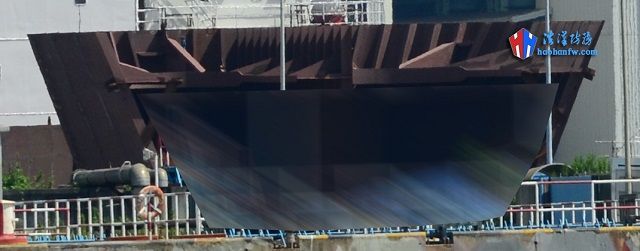


- Reaction score
- 0
- Points
- 360
Another picture of China's 2nd carrier taking shape:
Liaoning II class CV (CV17) construction update
Aug 27th 2016
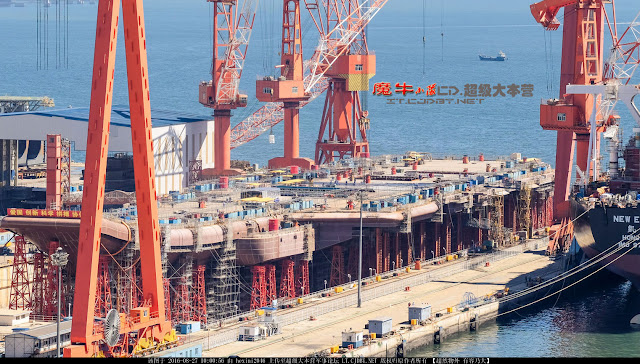
Photo: China Defense Blog
- Reaction score
- 0
- Points
- 360
^ from the same source as the last post above:
6 additional naval aviators certified for carrier operations
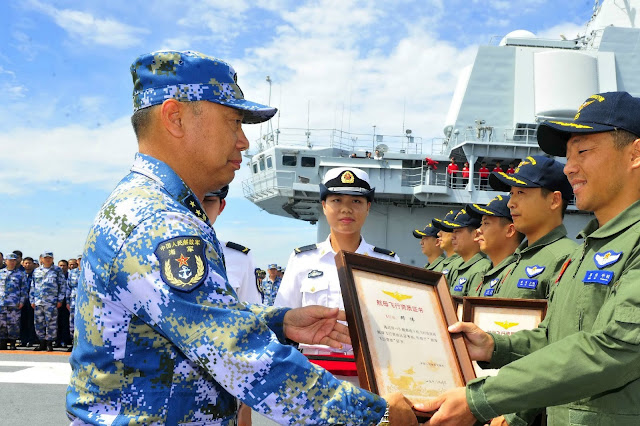
6 additional naval aviators certified for carrier operations

Soooooo....just throwing this out there. Isn't meaningful in the slightest, feel free to flame me for it.
But does anybody else find it really discouraging that the Chinese can design a class of warship and BUILD AN ENTIRE ******* FLEET OF THEM, all before we've even finished deciding what capabilities our new design may or may not have?
But does anybody else find it really discouraging that the Chinese can design a class of warship and BUILD AN ENTIRE ******* FLEET OF THEM, all before we've even finished deciding what capabilities our new design may or may not have?
- Reaction score
- 6,316
- Points
- 1,260
CBH99 said:Soooooo....just throwing this out there. Isn't meaningful in the slightest, feel free to flame me for it.
But does anybody else find it really discouraging that the Chinese can design a class of warship and BUILD AN ENTIRE ******* FLEET OF THEM, all before we've even finished deciding what capabilities our new design may or may not have?
Remember what Prime Minister Justin Trudeau said? "... the admiration I have for China because, uh, their basic dictatorship is actually allowing them to ..."
The Defence Ministry is not all that different from, say, the Pentagon: it's big, it's important but it is, now, in the early 21st century as subservient to the Zhongnanhai ( 中南海) the central headquarters for the Communist Party of China and the State Council (central government) of the People's Republic of China, which is hidden from the people behind it's red walls ...
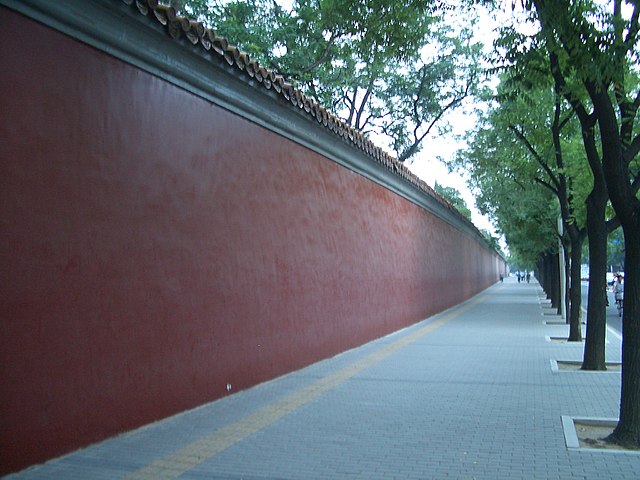
... as the Pentagon is to the White House and Congress in Washington.
And just as in Washington money is the key to military programmes.
The difference is that whereas the US defence budget is full to overflowing with "pork barrel" measures and individual legislator's pet projects and social engineering and downright contradictory "directives," the Chinese, being, in part, a dictatorship, doesn't need to hide political patronage projects like a "bridge to nowhere" in other appropriations and the defence ministry is (relatively) free to spend its allocations quickly and sometimes even efficiently on projects that have the blessing of the Zhongnanhai.
Don't get me wrong: there is still plenty of room for bureaucratic bungling, official ineptitude, corruption and nepotism in China's procurement system.
Our, Anglo-American solution to corruption, nepotism and ineptitude was (and still is): process. And we have piled process upon process over the years and then added a few more until the "system" looks more like this ...

... than the streamlined beauty we want ...

The Chinese are not "smarter" than us, but they are, also, not overburdened with processes piled upon processes that lead to bureaucratic infighting and, eventually, "management by inertia."

Similar threads
- Replies
- 5
- Views
- 920
- Replies
- 0
- Views
- 11K
- Replies
- 26
- Views
- 11K


